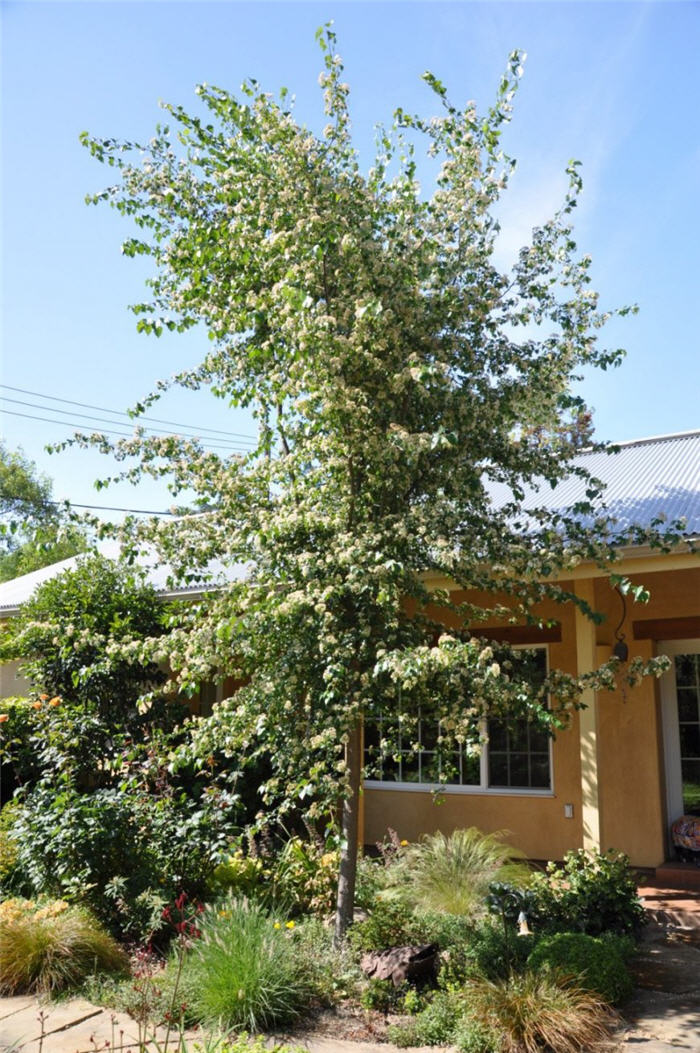| Botanical Name: Crataegus phaenopyrum | |
| Common Name: Washington Hawthorn |

-
Anatomy
-
Culture
-
Design
Plant Type
Tree
Height Range
25-40'
Flower Color
White
Flower Season
Spring
Leaf Color
Dark Green
Bark Color
Grey
Fruit Color
Red
Fruit Season
Fall
Sun
Full, Half
Water
Medium
Growth Rate
Moderate
Soil Type
Sandy, Clay, Loam, Rocky, Unparticular
Soil Condition
Average, Rich, Poor, Well-drained, Dry
Soil pH
Neutral, Basic
Adverse Factors
Attracts Bees, Thorns/Spines
Design Styles
English Cottage, Ranch, Woodland
Accenting Features
Fall Color, Multi-trunk Tree, Showy Flowers
Seasonal Interest
Spring, Summer, Fall
Location Uses
Background, Shrub Border, Walls / Fences
Special Uses
Hedge, Screen
Attracts Wildlife
Birds
Information by: Stephanie Duer
Photographer: Steve Mullany
Photographer: Steve Mullany
-
Description
-
Notes
Washington Hawthorn is a deciduous tree growing about 25 to 30 feet tall and wide. It has a broadly rounded crown, densely branched and thorny. New foliage emerges reddish-purple, ages to deep green, and turns orange to scarlet in the fall. White flowers appear in the spring and are followed by glossy red fruit in late summer and fall. It is sometimes grwon as a shrub; it makes an effective barrier.
Hawthorns grow in full sun to part shade, in any well drained soil. They tolerate clay, loamy, or sandy soils; pH adaptive. Very twiggy; prune in late winter to early spring when structure is most apparent (see Guides); shearing makes them more twiggy.